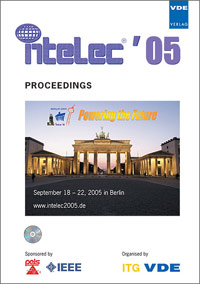Modular Conventional Protection and its Enhancement through Electronic Circuit Breaker Systems
Konferenz: Intelec '05 - Telecommunications Conference - 27th International Telecommunication Energy Conference
18.09.2005 - 22.09.2005 in Berlin, Germany
Tagungsband: Intelec '05 - Telecommunications Conference
Seiten: 6Sprache: EnglischTyp: PDF
Persönliche VDE-Mitglieder erhalten auf diesen Artikel 10% Rabatt
Autoren:
Mehl, Richard; Meckler, Peter (E-T-A GmbH, Altdorf Germany)
Inhalt:
Conventional mechanical circuit breakers protect AC and DC circuits from overload and short circuit conditions, and also meet the required physical isolation criteria after contact separation. They are limited in life because of mechanical degradation. Existing ESS's are hybrid devices that combine the advantages of mechanical circuit breakers that offer lower contact resistance and power loss with electronic remote control functions. Electronic circuit breakers are capable of offering features such as almost unlimited short circuit capacity, programmability of rated current and trip time curve characteristics, wire break indication, and millions of operating cycles without any degradation. Protection against field induced electromagnetic pulses need additional shielding. For this reason, electronic circuit breakers often use an electrical contact in series with the power semiconductor which will stay open and in the "OFF"-state, thus withstanding the required isolation voltages. Differences between both types of circuit breakers are discussed in detail based on specific test results and applications. For high DC voltage applications conventional circuit breakers need large air gaps, a sophisticated arc extinguishing method or they use expensive technologies like vacuum or gas filled switching chambers. ESS can meet the requirements in size and performance, but they also need an electrical contact for isolation. We must therefore conclude, that electronic circuit breakers often need electrical contacts.


